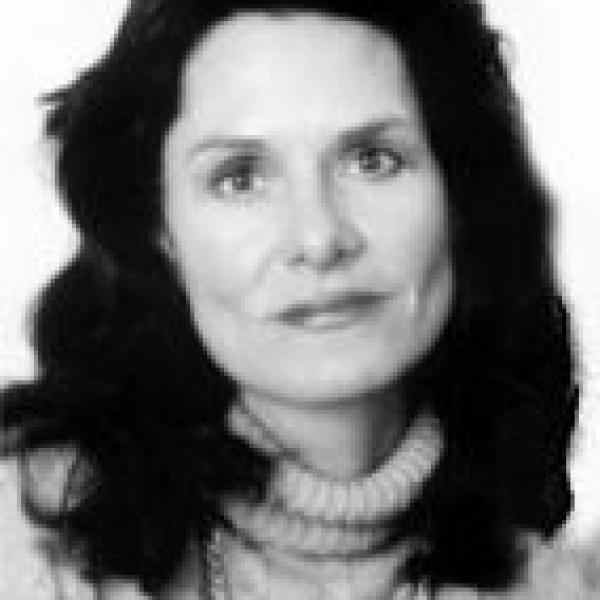Introduction
By allowing young inmates to shape their own rehabilitation program while in prison and by creating support and employment networks for them upon their release, Lesley Ann Van Selm effectively reintegrates juvenile offenders into society.
The New Idea
Lesley Ann Van Selm has developed a new citizen-based process for reintegrating and rehabilitating juvenile offenders that starts while they are still in prison and continues once they rejoin society. Before they are released, the process raises the young people's emotional intelligence. The program is shaped, vetted, and critiqued by the inmates themselves and is run by ex-offenders. After their release, the former prisoners are absorbed into society thanks to the support of a broad based network of potential employers, substantially decreasing the risk of recidivism. This process has gained the support of both the provincial and national correctional service departments across the country.
The Problem
At present there are six thousand young offenders, between twelve and twenty-five years old, in thirty-two prisons across South Africa. The rate of recidivism is exceptionally high, reaching 80 percent within six months of exiting prison. South Africa's high crime rate results in full prisons with few resources available to create better conditions for the prisoners. Most rehabilitation programs are only available in prison and do not provide post-release assistance. No support systems assist them to reintegrate back into their communities and find employment. Upon their release, young people experience rejection from their parents and the community because of their imprisonment. Furthermore, the stigma of a criminal record prevents many ex-prisoners from finding employment or having credibility in their communities. Despite rehabilitation programs, many young ex-convicts find it difficult to have confidence in the face of perceptions that they will always be criminals. Thus, prison gangs become their only familiar community, and prison seems like a relatively safe place where they are assured of three meals a day and a bed. Ex-prisoners repeat their previous pattern of criminal activity, and a cycle of crime and punishment becomes the norm. Rehabilitation without reintegration cannot achieve much success and becomes almost as ineffectual as no rehabilitation at all.
The Strategy
Lesley Ann reintegrates offenders into society by simultaneously bringing community into the prison and bringing the prison into the community. She begins by inculcating a sense of community into the prisoners themselves. Through storytelling and creative writing, she helps them reveal their hopes, dreams, and needs. She uses traditional, values-based storytelling, often in the form of visual arts, drama, dance, and music, as a lead-in to life skills activities geared at restoring the young people's self-respect and sense of responsibility. The program is conducted through self-study modules accompanied by facilitated group discussions. All of the courses in Lesley Ann's program are developed in conjunction with teachers, psychologists, and corrections professionals–and most notably with the inmates themselves. All materials developed are critiqued and modified by the young offenders. The courses are conducted at two different literacy levels and in several different languages. In order to build up evidence of success and increase the program's credibility, Lesley Ann currently focuses on offenders with short sentences of up to three years. The program is managed by Lesley Ann and implemented by ex-offenders who can relate to the lives of the inmates. Teams of three ex-offenders are currently implementing the program in Klerksdorp, Leeuwkop and Heidelberg prisons.
Knowing that she must have the correctional services system behind her to spread her idea effectively, Lesley Ann is developing her program in ways to win that support. For instance, she has successfully demonstrated the savings prisons can enjoy. If one prisoner is able to be released two to three months ahead of his or her sentence and does not return, the prison saves money. In one prison, she has begun to negotiate a shared savings reimbursement scheme, through which prison authorities plow those savings back into Lesley Ann's program, which will then run at no additional cost to the prison.At the same time Lesley Ann is managing the onsite prison programs, she is also implementing her strategy's second component: engaging the community to take responsibility for their young offenders. Ex-offenders work nearby the prison, setting up entrepreneurial initiatives to employ newly released young people. They also create and act in plays that are staged for the public and the corporate sector, to convince them that ex-offenders are employable and trustworthy. Meeting these young people and hearing their stories has successfully created a network of citizens and corporations who are willing to support Lesley Ann's initiative.
The Person
Throughout her work life, Lesley Ann has been committed to helping people and in constant contact with the homeless, alcoholics, and other people living on the margins of society. Lesley Ann started her career as a public relations officer at a shopping center where she initiated many creative marketing plans. Later, she worked as a managing director for travel companies, including one she started herself. She started Corrective Actions Holdings in 1993, embarking on a number of creative, culturally- oriented projects aimed uplifting the disadvantaged, one of which took her all over the globe with the world-renowned cultural historian, Credo Mutwa. Under the auspices of the Telecommunications Company and various government departments and educational institutions, one hundred sixty traditional African stories were developed into comic book format for schools. They are still being used as part of the school curriculum today.
In 1997, Lesley Ann conducted two pilot programs to test the efficacy of the storytelling project among young people in conflict with the law. The first trial ran with forty young people at the Walter Sisulu Place of Safety in Soweto, followed by forty-two sentenced juveniles at Leeuwkp Prison. This was so successful that the Welfare Department named the program Khulisa ("The Young Child Must Grow") and requested that it be implemented in all five of the nation's critical prisons with the greatest number of young people awaiting trial.
